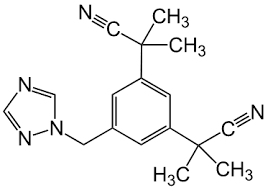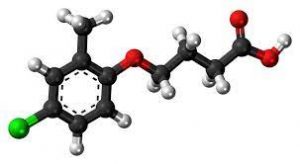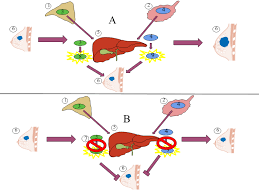Anastrozole Research Study
Anastrozole Research Study
Anastrozole is what is known as an Estrogen-Blocker. Estrogen-Blockers are used to inhibit the production of Estrogen by the body and to prevent the conversion of Testosterone into Estrogen via biological mechanisms inside the body.
For post-menopausal women, Anastrozole is commonly prescribed as part of breast cancer treatments because the presence of Estrogen exacerbates breast cancer. The brand name form of Anastrozole, Arimadex, is produced and distributed by the pharmaceutical giant AstraZeneca.
 Among men, Anastrozole Therapy is commonly prescribed along with Testosterone Therapy to inhibit the body's natural propensity to convert excess Testosterone into Estrogen, especially among obese patients and patients taking forms of Testosterone Therapy prone to inducing spikes in Testosterone Production.
Among men, Anastrozole Therapy is commonly prescribed along with Testosterone Therapy to inhibit the body's natural propensity to convert excess Testosterone into Estrogen, especially among obese patients and patients taking forms of Testosterone Therapy prone to inducing spikes in Testosterone Production.
Also, bodybuilders, athletes, and weight-lifters commonly take Anastrozole in combination with high levels of Testosterone to abuse the Anabolic effects of Testosterone while mitigating the side effects related to excess Estrogen and Testosterone, including Gynecomastia.
Anastrozole Clinical Study
In one particular study, published in 2009, researchers studied the impact of Anastrozole Treatment on the production of Testosterone and other sex hormones among men. They also measured a number of other co-varying factors, including cholesterol levels, PSA Counts, Strength, and Body Composition. All patients in the study were individuals suffering from Low-T, and all patients were treated with Anastrozole Estrogen-Blocker for twelve months.
After a year of treatment, researchers found that the men experienced an increase in Testosterone of around fifty percent, which was sufficient to put men right in the middle of a healthy, adult Testosterone Range.
This was coupled with an average twenty percent decrease in Estradiol levels, although the average Estradiol levels were normal on average.
Anastrozole had a number of beneficial effects. The Estrogen-Blocking Treatment increased concentrations of Luteinizing Hormone, Dihydrotestosterone, and Free Testosterone (also known as Bioavailable Testosterone). These effects were significant when compared to the placebo group.
Unfortunately, the increase in Androgen Production and decrease in Estradiol production did not significantly enhance strength or body composition. Still, it did not harm cholesterol balance, prostate health, or PSA Levels.
Andropause and Male Health - Testosterone and Estrogen
It has long been known that the male aging process is strongly correlated with a steady and constant drop in the production of male androgens such as Testosterone and Dihydrotestosterone. It is also known that Estrogen Production also drops at the same time as these male Androgens decline, albeit at a slower rate.
This transformation eventually leads to a condition known as Testosterone Deficiency, Andropause, or Low-T. At the same time, Estradiol ratios increase in Testosterone Concentration due to their differing rates of decline. This is because, although there is less Testosterone, the body converts that Testosterone into Estradiol faster with age.
Researchers are still attempting to discover the full implications of this biological change and how it affects male health.
Hormone Scientists are also attempting to figure out exactly how this biological change occurs, as the mechanisms are not yet fully understood.
Why Do Testosterone Levels Drop Faster than Estrogen Levels in Men?
Endocrinologists do have some hypotheses, however. Here are some of them:
Reduced production of Testosterone as a result of increased Estrogen synthesis.
Decrease in the mass of Leydig Cells, which are responsible for the production of Testosterone.
Leydig Cells may become increasingly insensitive to stimulation from the Pituitary, which could inhibit Testosterone Production.
As men grow older, they could produce less Testosterone due to increased activity of Gonadostatin Hormones or other hormones, which suppress the production of Testosterone as a factor of age.
How Does Anastrozole Increase Testosterone Levels?
Aromatase Inhibitors such as Anastrozole and Arimadex can enhance Testosterone production because they reduce the production of Estradiol.
The presence of excess Estradiol produces a negative feedback mechanism that encourages the enhanced release of Gonadotropin-Releasing Hormone, Luteinizing Hormone, and Follicle Stimulating Hormone by the Hypothalamus (GRH) and the Pituitary (LH and FSH).
Hormone, Luteinizing Hormone, and Follicle Stimulating Hormone by the Hypothalamus (GRH) and the Pituitary (LH and FSH).
All of this acts together in a way that stimulates the testes and adrenal glands to produce more Testosterone.
Why is Anastrozole Useful for Testosterone Replacement?
There are a number of reasons why it would be highly beneficial to use Anastrozole as a means to improve Testosterone Production if it were effective:
Anastrozole is effective in pill form, making it easy to take with minimal inconvenience.
It can mitigate the side-effect of Gynecomastia related to Testosterone Therapy.
Protects the cardiovascular system and the cognitive faculties from the adverse effects of excess estrogen.
Anastrozole may be beneficial instead of Testosterone Therapy as a means to enhance Testosterone Production without the risk of Benign Prostatic Hyperplasia (as of yet unfounded)
Previous Research: Hypogonadism and Anastrozole
One of the inspirations that led researchers to conduct this study regarding the impact of Anastrozole on Estrogen and Androgen Levels was another study that evaluated the effects of Anastrozole on 37 geriatric patients suffering from hypogonadism.
This study produced some very similar results regarding how Anastrozole improved Testosterone Concentrations and normalized the ratio between Testosterone and Estradiol.
The original study was conducted over the course of three months, as opposed to the year-long study conducted in 2009. These results were corroborated in another study, although that study did not involve a control-placebo group.
The Testes May Lose Their Ability to Produce Testosterone as Men Grow Older
Because this study was conducted over a year, rather than only three months, it provided more significant information regarding how the human body responds to long-term treatment with Anastrozole. In this study, for example, results after three months were nearly identical to those in the earlier three-month studies, but then, over the next nine months, androgen concentrations dropped.
The researchers hypothesize that the decrease in Testosterone Concentration could result from increased resistance to the Estrogen-Blocking Medication. Researchers found that, although Testosterone Production dropped over the course of the last nine months, Luteinizing Hormone Levels remained at high levels.
This suggests that although the Hypothalamus and Pituitary are sending sufficient signals to produce youthful levels of Testosterone, the Leydig Cells in the testes, for unclear reasons, are no longer capable to meet the demands of the body.
It has been observed, however, that Leydig Cells are less responsive to Luteinizing Hormone when there is a higher concentration of ligands. Because of the stable Estradiol Concentrations over the nine months, as well as well-kept medication diaries and monitored pill counts, the researchers can discount noncompliance as a contributing factor to reduced Testosterone Concentrations.
Effects of Anastrozole on Body Composition Differ from the Effects of Testosterone Therapy
The vast majority of studies on why men with Low-T Hypogonadism have been treated with Testosterone have shown that Andropause Therapy reduces body fat and increases muscle mass. Many studies also show that Testosterone Restoration positively impacts physical strength.
In this study, the same benefits do not appear to be apparent regarding Anastrozole. After a year of medication with Anastrozole, no significant changes in muscle mass, strength, or body composition were observed. These results are similar to those of other studies which utilized Estrogen-Blockers for a shorter period of time.
Why Is Anastrozole Alone Not as Effective as Testosterone Treatment?
It could be that the patients did not have Low-T of sufficient severity to produce positive biological changes in body composition. The researchers don't feel that this is the case, however, because there have been other studies in which men with the same degree of Low-T were able to experience significant gains in body composition directly from therapy.
A second potential explanation for this lack of change in fat and muscle mass is that Anastrozole alone, or at the dose administered, cannot produce the increase in Testosterone necessary to lead to significant gains in body composition.
 Most studies that have led to increased Muscle Mass and Decreased Body Fat were the result of increasing Free Testosterone Levels to High-Normal. In contrast, this treatment only raised Testosterone Levels to Mid-Normal.
Most studies that have led to increased Muscle Mass and Decreased Body Fat were the result of increasing Free Testosterone Levels to High-Normal. In contrast, this treatment only raised Testosterone Levels to Mid-Normal.
Another issue with Anastrozole Pills is that they don't produce the same increases as Bio-Identical Testosterone Formulations because these treatments bypass the digestive system and deliver the dose directly to the bloodstream. Testosterone Administered via Injection, Patch, or Cream, produces Testosterone Peaks that are higher than average.
Since this study only produced peak Testosterone Levels that were mid-normal, and concentrations dropped over the course of the year of therapy, this may have been the reason why Free Concentration did not produce significant Body Composition gains.
It is also possible that the reduced concentrations of Estradiol resulting from Anastrozole Treatment could have inhibited the gains that one would typically expect from treatment. In animal subjects, there is evidence that male mice increase body fat if aromatase genes are not activated.
This is also true if Estrogen Receptor-α is not activated. Among rats that have been castrated, the administration of Estrogen actually protects against weight gain and can generate muscle mass.
In this animal study, men who have experienced Prostate Cancer are more resistant to weight gain when treated with an Androgen Blocker, which increases Estradiol Levels known as Bicalutamide.
These benefits were enhanced in relationship to Gonadotropin-Releasing Hormone, which simultaneously inhibits Estrogen and Androgen Production. Interestingly enough, it appears that Estradiol does play a particular role in protecting healthy body composition among male patients.
Anastrozole Does Not Impact the Prostate Gland
All this study shows that Anastrozole and Arimadex have no impact on prostate health. In particular, Anastrozole does not lead to prostate enlargement, and it does not lead to increased PSA Counts.
Researchers hypothesize that since Anastrozole decreased Estradiol Levels while increasing Testosterone Levels, it counteracted the effect on the prostate that is often the result of Testosterone Therapy used alone.
The scientists that produced this study took the time to emphasize this connection between the Prostate and Estrogen.
It may be that Testosterone Therapy combined with Anastrozole may have the ability to provide the standard benefits of Testosterone Restoration and Optimization while protecting the prostate from the risk of the potential side-effect of Prostate Enlargement.
There is further biological evidence that this may be the case. Estradiol Levels are positively correlated with increased incidence and severity of Benign Prostatic Hyperplasia, and the body becomes more sensitive to Aromatase as men grow older.
Animal studies have also shown that Estrogen Injections enhance Prostate-Specific antigens and lead directly to the proliferation of stromal cells and prostatic epithelial cells associated with Benign Prostatic Hyperplasia. Animal studies have also shown that drugs that inhibit Estradiol can alleviate the condition's effects.
Anastrozole Does Not Alter Cholesterol Balance or Increase Red Blood Cell Count
This study shows no evidence that Anastrozole Treatment negatively impacts cholesterol or causes polycythemia.
Today, researchers are highly interested in figuring out how to provide Testosterone Therapy to patients with Low-T while preserving or enhancing cardiovascular health and cholesterol levels. Many studies clearly point out that healthy Testosterone Levels are associated with improved heart health and enhanced cholesterol balance.
However, other studies regarding Testosterone Therapy show that some forms of Testosterone Treatment can sometimes lead to negative consequences regarding cholesterol.
There is also evidence that oral Estrogens reduce LDL cholesterol levels and increase HDL cholesterol levels in both sexes. Estrogens administered via cream have a limited impact on cholesterol.
These positive changes in cholesterol associated with Estrogen pills do not seem to provide heart benefits. This provides even more evidence that Cardiovascular Risks are complex, and many factors control heart health, not just cholesterol. Other issues that can affect Cardiovascular Health include endothelial function, coagulation, insulin resistance, and inflammation.
Anastrozole Study Limitations
There is one decisive issue that can impact the results of this study. There is no clearly defined definition of Low-T among older men. Because there is no agreed-upon definition, establishing clinical guidelines for Andropause and Low-T is difficult.
This study used a more standard definition of Age-Related Low-T to choose its subjects, but other researchers have tighter guidelines for what patients are considered Andropause Sufferers.
Suppose the researchers had used tighter guidelines for Testosterone Deficiency. In that case, they might have found positive effects on muscle mass and body fat, but they argue that had they used these more stringent guidelines, the study could not effectively be compared to most other Low-T Studies.
Anastrozole Study Summary
To summarize the above study and its effects, researchers found that one year of Anastrozole Pill Treatment could suppress Estradiol Levels and enhance Testosterone Production among adult males over the age of sixty struggling with mild or moderate Low-T.
This treatment was able to restore Testosterone Concentrations associated with that of young and healthy males, but it did not have a positive impact on the strength and body composition.
the strength and body composition.
This outcome could have been the effect of inhibited Estradiol Production in relationship to increased Testosterone Levels, or it could have resulted from a developed resistance to the Estrogen-Blockers.
Future studies could monitor the effects of Anastrozole (Arimadex) Estrogen-Blockers on other issues associated with Low-T, including reduced sexual function, quality of life, cognitive health, insulin sensitivity, and bone mineral density.
Such studies would enhance our knowledge of how Estradiol and other Estrogens impact men's health and how Estrogen interacts with Testosterone and Testosterone Restoration.
Anastrozole Information Source:
http://www.medscape.com/viewarticle/586804_4
- Research Hgh For Patients Over 60 [Last Updated On: September 8th, 2024] [Originally Added On: September 30th, 2020]
- Natural Hormone Replacement Abc News 13 [Last Updated On: December 21st, 2024] [Originally Added On: October 2nd, 2020]
- My Own Experience With Human Growth Hormone Case Study [Last Updated On: February 10th, 2025] [Originally Added On: October 3rd, 2020]
- Ipamorelin Alternative To Hgh Injection Therapy [Last Updated On: February 10th, 2025] [Originally Added On: October 4th, 2020]
- Human Growth Hormone Therapy For Adult Hgh Deficiency Do The Benefits Stack Up [Last Updated On: February 2nd, 2025] [Originally Added On: October 5th, 2020]
- Human Growth Hormone Rehabilitation Benefits [Last Updated On: September 1st, 2024] [Originally Added On: October 6th, 2020]
- HRT [Last Updated On: August 5th, 2024] [Originally Added On: October 7th, 2020]
- Hormone Replacement Therapy With Pellet Implants [Last Updated On: August 4th, 2024] [Originally Added On: October 8th, 2020]
- Omnitrope Bio-identical HGH Injections [Last Updated On: February 2nd, 2025] [Originally Added On: October 9th, 2020]
- Imported Human Growth Hormone Is Illegal In The United States [Last Updated On: February 1st, 2025] [Originally Added On: October 10th, 2020]
- Igf-1 Stimulates The Growth Of Motor Neurons In The Brain [Last Updated On: September 2nd, 2024] [Originally Added On: October 11th, 2020]
- Estrogen Hormone Replacement Therapy May Diminish Alzheimers Disease Risk [Last Updated On: February 1st, 2025] [Originally Added On: October 12th, 2020]
- The Potential Benefits Of Estrogen On Alzheimer's Risk [Last Updated On: January 31st, 2025] [Originally Added On: October 13th, 2020]
- Dr. Hotze Talks About A Natural Solution For Depression. [Last Updated On: December 23rd, 2024] [Originally Added On: October 14th, 2020]
- Symptoms Of Hormonal Imbalance In Women: What To Look For [Last Updated On: March 15th, 2025] [Originally Added On: May 12th, 2021]
- Beware of Fake Hormone Booster Pills – Sign Up for the Real Deal [Last Updated On: February 27th, 2025] [Originally Added On: December 21st, 2022]
- Chronic Fatigue versus Hormone Deficiency: How Can Patients and Doctors Tell the Difference? [Last Updated On: July 10th, 2024] [Originally Added On: January 18th, 2023]
- Ipamorelin: A Safer, Cost-Effective Alternative to HGH Therapy [Last Updated On: February 13th, 2025] [Originally Added On: February 13th, 2025]
- Treatment of Hormone Deficiencies [Last Updated On: February 15th, 2025] [Originally Added On: February 15th, 2025]
Word Count: 2187







